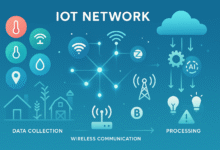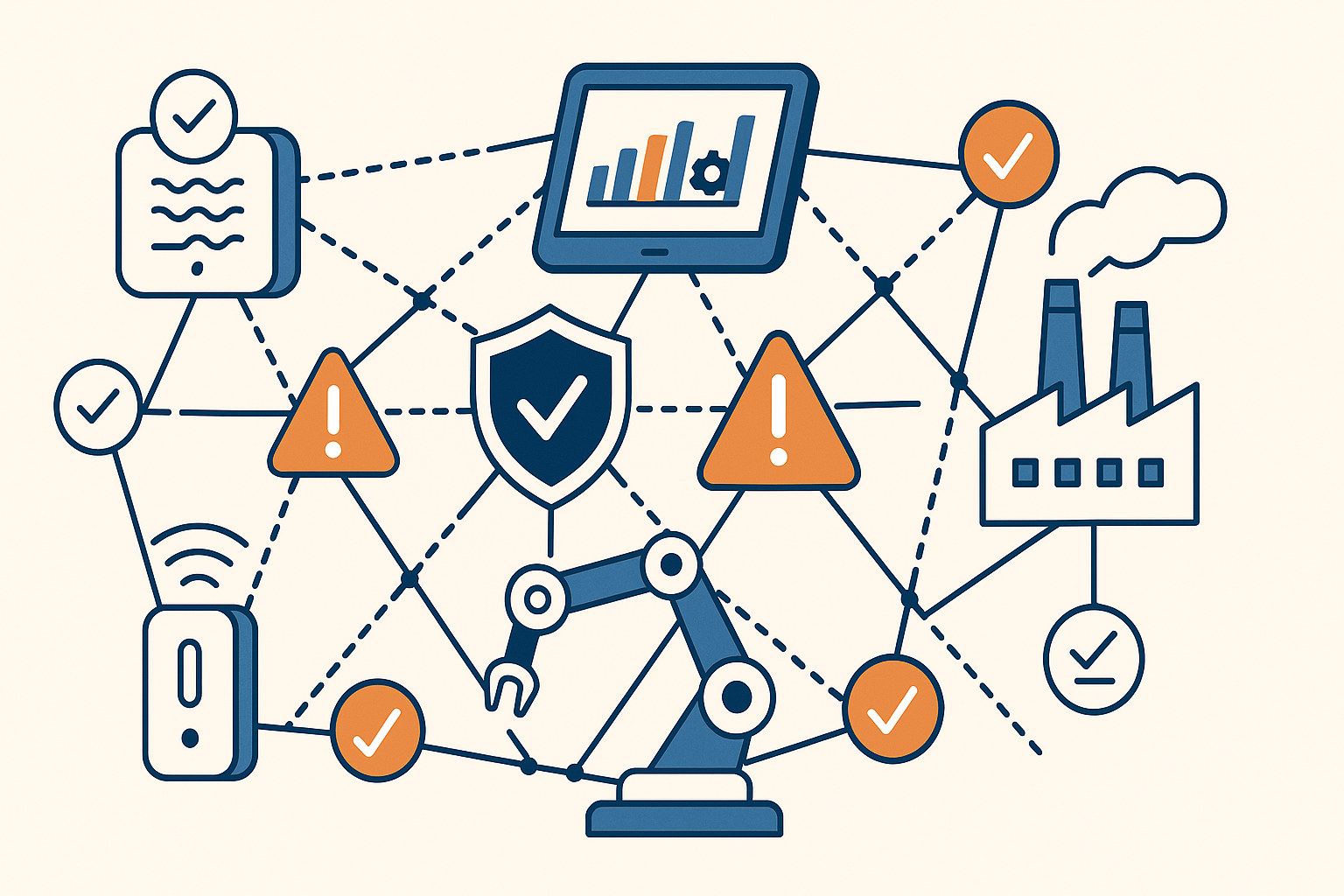Choosing the Right Network Protocol for IoT Projects
This comprehensive guide explores the key factors to consider when selecting a network protocol for IoT projects, diving into popular protocols,

The Internet of Things (IoT) has transformed how devices communicate, enabling seamless connectivity across industries like smart homes, healthcare, agriculture, and industrial automation. At the heart of every IoT ecosystem lies the network protocol for IoT projects, which determines how devices exchange data efficiently and securely. Selecting the right network protocol is critical to ensuring your IoT project meets performance, scalability, and security requirements. With numerous protocols available, each with unique strengths and limitations, choosing the optimal one can be daunting. This comprehensive guide explores the key factors to consider when selecting a network protocol for IoT projects, diving into popular protocols, their applications, and practical tips for making an informed decision.
What Are Network Protocols in IoT?
Network protocols are standardized rules that govern how devices in an IoT system communicate over a network. They define the format, timing, and sequence of data exchange, ensuring interoperability between heterogeneous devices like sensors, actuators, and gateways. In IoT projects, the network protocol for IoT projects must balance factors like power consumption, data rate, range, and security to meet the specific needs of the application.
IoT protocols operate at different layers of the network stack, including the application layer (e.g., MQTT, CoAP), transport layer (e.g., TCP, UDP), and network layer (e.g., IPv6). Each protocol is designed to address specific use cases, such as low-power communication for battery-operated devices or high-speed data transfer for real-time monitoring. Understanding these protocols and their trade-offs is essential for building a robust IoT solution.
Why Choosing the Right Network Protocol Matters
The network protocol for IoT projects directly impacts the system’s performance, reliability, and scalability. A poorly chosen protocol can lead to issues like high latency, excessive power consumption, or security vulnerabilities, compromising the entire project. For example, a smart home system requiring real-time control needs a low-latency protocol like MQTT, while a remote agricultural monitoring system might prioritize a long-range, low-power protocol like LoRaWAN. By aligning the protocol with your project’s requirements, you ensure efficient data transfer, minimal resource usage, and a future-proof design.
Key Factors to Consider When Choosing a Network Protocol for IoT Projects
Selecting the right network protocol for IoT projects involves evaluating several factors based on your project’s goals and constraints. Below, we explore the most critical considerations to guide your decision-making process.
1. Power Consumption
IoT devices, especially those in remote or battery-powered applications, must operate efficiently to maximize battery life. Protocols like Zigbee, Z-Wave, and Bluetooth Low Energy (BLE) are designed for low-power consumption, making them ideal for devices like smart sensors or wearables. In contrast, protocols like Wi-Fi, which offer high data rates, consume more power and are better suited for devices with constant power sources, such as smart thermostats or security cameras.
For example, in a smart agriculture project monitoring soil moisture, a low-power protocol like LoRaWAN can transmit small data packets over long distances while preserving battery life. Understanding your device’s power constraints is crucial when selecting a network protocol for IoT projects.
2. Data Rate and Bandwidth
The volume and frequency of data your IoT system needs to transmit will influence your protocol choice. High-bandwidth protocols like Wi-Fi and Ethernet are suitable for data-intensive applications, such as video streaming in smart surveillance systems. However, many IoT applications, like temperature monitoring or smart lighting, involve small data packets, making low-bandwidth protocols like MQTT or CoAP more appropriate.
For instance, MQTT (Message Queuing Telemetry Transport) is lightweight and optimized for transmitting small, intermittent data packets over unreliable networks, making it a popular choice for IoT applications with constrained bandwidth.
3. Range and Coverage
The physical distance between IoT devices and their gateways or base stations is another critical factor. Short-range protocols like BLE and Zigbee are ideal for applications within a confined area, such as smart homes or offices, with ranges typically under 100 meters. For long-range applications, such as smart cities or environmental monitoring, protocols like LoRaWAN or NB-IoT offer coverage over several kilometers.
Consider a smart city project deploying traffic sensors across a metropolitan area. LoRaWAN’s long-range capabilities make it a strong candidate, as it can connect devices spread across large distances without requiring frequent repeaters or gateways.
4. Scalability
As IoT projects grow, the network protocol for IoT projects must support an increasing number of devices without compromising performance. Protocols like Zigbee and Thread use mesh networking, allowing devices to relay data to one another, extending range and supporting large networks. In contrast, protocols like BLE are better suited for smaller, point-to-point connections.
For example, a smart building with hundreds of sensors for lighting, HVAC, and security would benefit from a scalable protocol like Zigbee, which can handle a large number of nodes in a single network.
5. Security
Security is paramount in IoT projects, as devices often transmit sensitive data. The network protocol for IoT projects must support robust encryption, authentication, and data integrity mechanisms to prevent unauthorized access or data tampering. Protocols like MQTT and CoAP support Transport Layer Security (TLS) for secure communication, while LoRaWAN uses end-to-end encryption to protect data in transit.
When deploying IoT devices in healthcare, such as remote patient monitoring systems, choosing a protocol with strong security features is non-negotiable to comply with regulations like HIPAA and protect patient data.
6. Cost and Infrastructure
The cost of implementing a network protocol for IoT projects includes hardware, gateways, and network infrastructure. Protocols like Wi-Fi and cellular (e.g., NB-IoT, LTE-M) may require more expensive hardware or subscription fees for network access. In contrast, protocols like Zigbee or LoRaWAN can be more cost-effective for large-scale deployments due to their low-power requirements and minimal infrastructure needs.
For budget-conscious projects, such as a small-scale smart home system, BLE or Zigbee offers a cost-effective solution with minimal setup complexity.
Popular Network Protocols for IoT Projects
With the key factors in mind, let’s explore some of the most widely used network protocols for IoT projects, their features, and their ideal use cases.
1. MQTT (Message Queuing Telemetry Transport)
Overview: MQTT is a lightweight, publish-subscribe protocol designed for low-bandwidth, high-latency, or unreliable networks. It’s widely used in IoT due to its efficiency and simplicity.
Features:
-
Low overhead, ideal for constrained devices.
-
Supports QoS (Quality of Service) levels for reliable data delivery.
-
Uses TCP/IP and supports TLS for secure communication.
Use Cases:
-
Smart home systems (e.g., controlling lights or thermostats).
-
Industrial IoT for real-time monitoring of machinery.
-
Remote sensor networks in agriculture or environmental monitoring.
Why Choose MQTT?: MQTT is an excellent choice for projects requiring low-bandwidth, real-time communication with minimal power consumption. Its publish-subscribe model makes it highly scalable for large IoT deployments.
2. CoAP (Constrained Application Protocol)
Overview: CoAP is a lightweight protocol designed for resource-constrained devices and networks, operating over UDP instead of TCP for lower overhead.
Features:
-
Supports RESTful interactions, similar to HTTP.
-
Low power consumption and small packet size.
-
Built-in support for multicast, enabling efficient group communication.
Use Cases:
-
Smart energy management systems.
-
Wearable devices and healthcare IoT applications.
-
Smart city applications requiring low-power communication.
Why Choose CoAP?: CoAP is ideal for network protocols for IoT projects where devices have limited processing power and bandwidth, and where UDP-based communication is preferred for simplicity.
3. LoRaWAN (Long Range Wide Area Network)
Overview: LoRaWAN is a low-power, wide-area network protocol designed for long-range communication, making it ideal for connecting devices over large distances.
Features:
-
Range up to 15 km in rural areas and 2-5 km in urban settings.
-
Extremely low power consumption for extended battery life.
-
Supports secure communication with AES-128 encryption.
Use Cases:
-
Smart agriculture for soil and weather monitoring.
-
Smart cities for traffic, parking, or waste management systems.
-
Asset tracking in logistics and supply chain management.
Why Choose LoRaWAN?: LoRaWAN excels in applications requiring long-range connectivity and low power, making it a top choice for large-scale, battery-powered IoT deployments.
4. Zigbee
Overview: Zigbee is a low-power, short-range protocol that uses mesh networking to connect devices in a robust and scalable manner.
Features:
-
Supports up to 65,000 devices in a single network.
-
Low power consumption for battery-operated devices.
-
Operates in the 2.4 GHz band, compatible with many IoT devices.
Use Cases:
-
Smart home ecosystems (e.g., lights, locks, and sensors).
-
Industrial automation for sensor networks.
-
Healthcare for medical device connectivity.
Why Choose Zigbee?: Zigbee’s mesh networking and low-power design make it a strong contender for network protocols for IoT projects in smart homes or industrial settings with many devices.
5. Bluetooth Low Energy (BLE)
Overview: BLE is a power-efficient version of Bluetooth designed for short-range communication in IoT applications.
Features:
-
Ultra-low power consumption for extended battery life.
-
Range up to 100 meters in ideal conditions.
-
Wide device compatibility, especially for consumer electronics.
Use Cases:
-
Wearable devices like fitness trackers and smartwatches.
-
Smart home devices like door locks or proximity sensors.
-
Retail IoT for beacon-based marketing.
Why Choose BLE?: BLE is perfect for projects requiring short-range, low-power communication, especially in consumer-facing IoT applications.
6. Wi-Fi
Overview: Wi-Fi is a high-bandwidth, widely available protocol suitable for IoT applications with access to power and robust network infrastructure.
Features:
-
High data rates for large data transfers.
-
Wide availability and compatibility with existing networks.
-
Supports robust security protocols like WPA3.
Use Cases:
-
Smart home devices like cameras or voice assistants.
-
Industrial IoT for real-time data streaming.
-
Healthcare for high-bandwidth medical imaging systems.
Why Choose Wi-Fi?: Wi-Fi is ideal for network protocols for IoT projects requiring high-speed data transfer and connectivity to existing networks, despite higher power consumption.
Practical Tips for Choosing the Right Network Protocol
-
Define Your Project Requirements: Start by outlining your project’s goals, such as data rate, range, power constraints, and security needs. This will narrow down your protocol options.
-
Consider Hybrid Approaches: In complex IoT systems, combining protocols (e.g., BLE for local communication and Wi-Fi for cloud connectivity) can optimize performance.
-
Evaluate Scalability: Choose a protocol that can scale with your project, especially if you anticipate adding more devices in the future.
-
Prioritize Security: Ensure the protocol supports strong encryption and authentication, especially for sensitive applications like healthcare or finance.
-
Test in Real-World Conditions: Simulate your IoT environment to test how the protocol performs under real-world constraints like interference or network congestion.
Future Trends in IoT Network Protocols
The IoT landscape is evolving, and so are the network protocols for IoT projects. Emerging technologies like 5G offer ultra-low latency and high bandwidth, making them suitable for real-time applications like autonomous vehicles. Additionally, advancements in low-power protocols like NB-IoT and improvements in mesh networking are expanding the possibilities for large-scale IoT deployments. Staying informed about these trends can help you future-proof your IoT project.
Conclusion
Choosing the right network protocol for IoT projects is a pivotal decision that impacts the success of your IoT deployment. By carefully considering factors like power consumption, data rate, range, scalability, security, and cost, you can select a protocol that aligns with your project’s unique requirements. Whether it’s MQTT for real-time monitoring, LoRaWAN for long-range applications, or Zigbee for scalable smart home systems, each protocol offers distinct advantages. By understanding their features and trade-offs, you can build an IoT ecosystem that is efficient, secure, and scalable, paving the way for innovation in the connected world.











